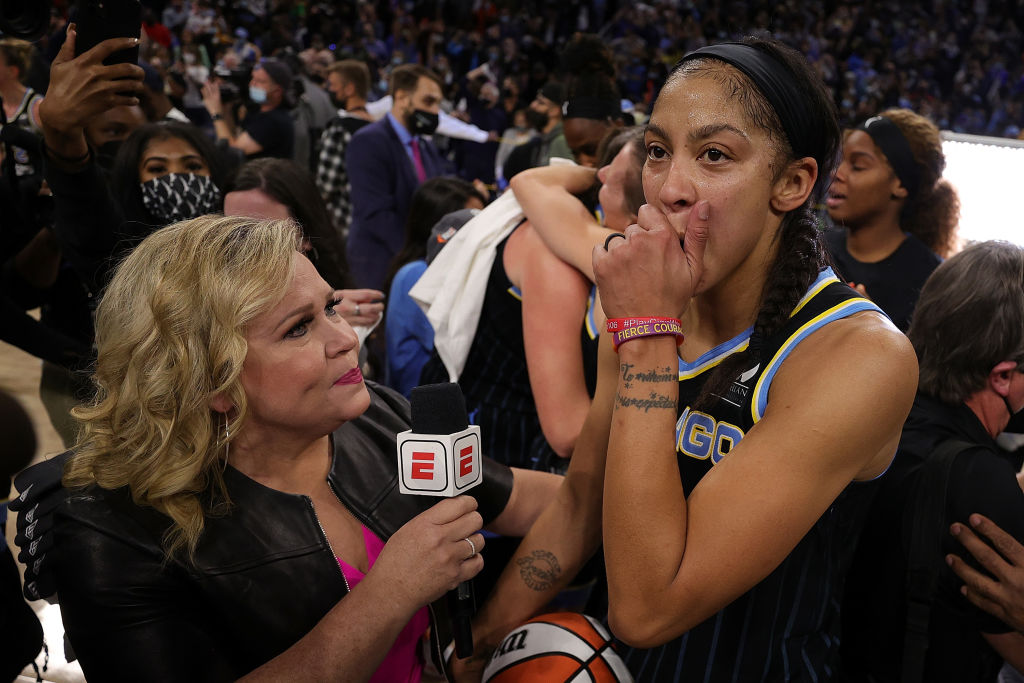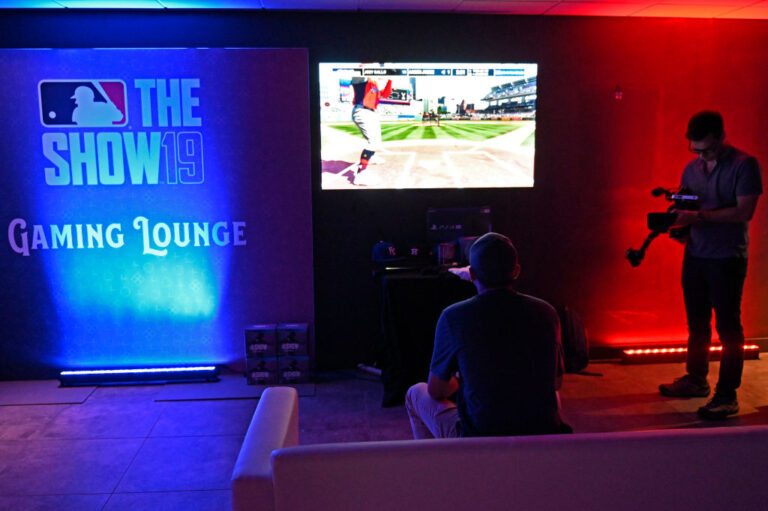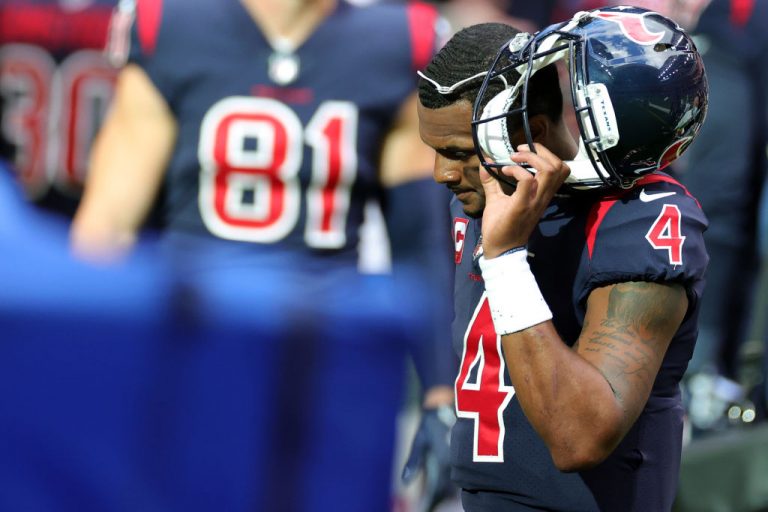‘That’s Not the Bar’: Women’s Basketball Is on the Front Line of a Changing Sports Media
Why this matters
While new Global Sport Institute Field Study data highlights gaps in the career pipeline for women’s college basketball head coaches, media coverage plays a critical role in exposing women’s sports to broader audiences, creating energy around the sports, and showing young athletes and coaches that women’s sports are a viable professional pathway.
When Rachel Quon played soccer at Stanford University in the early 2010s, her parents could hardly make her out on their screen when they tuned into her games. Watching from the suburbs of Chicago, the couple would find game streams online, then weave a thick HDMI cord between their laptop and television to cast the video onto the big screen. The result was a pixelated jumble of colors that made it hard to make out what was happening. Quon still has the highlight videos they recorded, but more for the sentiment than the video quality.
“It was the blurriest stream, I don’t even know if they knew who was who,” Quon says. “That’s where it was back then.”
A decade later, high-definition broadcasts of women’s sports are far more common. But while media coverage of those sports has made progress, it’s still nowhere near as prolific as men’s sports coverage - or where coaches, athletes, and fans of women’s sports want it to be. In the United States, coverage of women’s sports typically tops out at 5 percent of total sports airtime, rising to around 10 percent during a huge event like the World Cup. And even when women’s sports receive media attention, the coverage can depict participants in sexist and insulting ways.
The result? A dearth of quality coverage that arguably inhibits the growth of women’s sports while contributing to broader misogyny in society.
“There’s a massive audience for women’s sports that is consistently underserved,” says Quon, whose employer, Just Women’s Sports, is one of many new outlets working to improve coverage.
Other countries offer a blueprint for growth and improvement. That blueprint has a national focus on equitable coverage and multiple advocacy groups working to bridge gaps between how men’s and women’s sports are presented. Yet even the most forward-thinking locales top out around 20 percent of airtime for women – signaling that while the U.S. may lag behind, disparities run deep across the globe.
How the Media Reinforces Fandom of Men’s Sports
In theory, sports coverage is driven by preexisting audience interest: reporters write about what people already want to read, and broadcasts cover what people already want to watch. But in reality, the coverage choices media outlets make can strongly influence what people care about. In the U.S., coverage primarily centers on men’s sports, and as fans seek out information, their fandom of men’s leagues is reinforced by the plentiful coverage they find.
Meanwhile, women’s sports are largely shut out of this cycle, with no clear path to joining in. When Cheryl Reeve became the head coach and general manager of the Minnesota Lynx of the Women’s National Basketball Association in 2010, she organized a luncheon where movers and shakers in local media could sit down with team executives. Reeve asked them what she and the Lynx could do to get more coverage: Better access? More frequent press conferences? Pitching stories?
Their response was straightforward: Win games.
But that felt unfair to Reeve, and she told them so.
“Why do women have to win,” she asked, “when success is not an indicator of coverage on the men’s side? Why is it necessary that women have to win to earn, you know, 5 percent of the coverage?”
Still, Reeve won, accumulating a .679 winning percentage in her first decade in town, making six WNBA Finals and winning four league championships. The local media hardly held up its end of the bargain. Even today, after a season in which the Lynx’s playoff streak stretched to 11 years, Reeve still rarely sees TV cameras and the city only has one assigned beat reporter.
“Now, I don’t know that things have changed all that drastically here despite winning multiple seasons averaging 25 wins for over seven seasons out of a 34-game schedule,” Reeve says. “And so when I sort of challenged them, they go, ‘Well, it's better than the other markets.’ And I say, ‘But that's not the bar.’”
The Lynx are consistently near the top of the WNBA in attendance, averaging around 10,000 fans per game. But even that, Reeve says, is not an ideal measuring stick for potential interest in her team. What about all the people in the region who’ve never been exposed to the Lynx at all because stories are so hard to come by?
This question is not unique to Minnesota. Across sports and across the country, traditional media mostly ignores women’s sports. Even when newer forms of digital and social media are included, the same trends persist, with women’s sports rarely breaking 10 percent of all sports news coverage.
By not filing stories on or pointing cameras toward women’s sports, media organizations arguably are preventing themselves from ever discovering whether there could be a larger - and more profitable - audience for women’s sports stories.
“The NBA is covered whether it’s in or out of season, and it’s several hours of coverage in the offseason,” says Cheryl Cooky, a sports sociologist at Purdue. “Whereas, conversely, when the women’s league is in season during the same time frame, it’s (only) several minutes of coverage in the spaces we looked at.”
Sexism ‘Embedded in the Culture of Sport’
Even when women’s sports receive coverage, the substance of it is not always well-informed or professional - at least not in the ways that characterize men’s sports coverage. Names are mispronounced, broadcasts are poorly produced, and, most tellingly, reporting can often be downright insulting.
A report from The Representation Project examining women’s sports coverage at the Tokyo Olympics this year found that women are 10 times more likely than men to be objectified by the camera (when operators zoom or focus on physique or specific body parts), six times more likely to be referred to by their gender, and seven times more likely to be infantilized (one commentator referred to an athlete checking her notes as “writing in her diary”).
“This kind of objectification is dehumanizing and dangerous,” Jennifer Siebel Newsom, the founder and chief creative officer of The Representation Project, told Lindsay Gibbs of the PowerPlays newsletter.
Sexist language and framing affects how women and girls are seen in everyday life. In a country where women are paid less, get fewer leadership opportunities, and are more likely to be the victims of gender discrimination and sexual violence, the way women are talked about in mainstream media matters. “Because of the way that sport has figured culturally in our society as this really important site for understanding gender and understanding masculinity and understanding femininity,” Cooky says, “Sport has that potential to challenge those ways that we think about men and women and expectations and roles, or to reaffirm those.”
Holistic and educated coverage of women athletes and women’s sports – as well as women in other walks of life – can increase the confidence of girls and women.
“As those girls and as those women receive the message over and over again that you don’t matter, that we don’t care, that has to impact us on some level,” Cooky adds. “My question is at what point does (the women’s sports industry) recognize that this is about the legacy of sexism in sports that’s still informing how we see and view and understand how we view the women’s game versus putting our head in the sand and denying the realities that are out there?”
Measuring the Right Audience
What if, rather than guessing at fans’ interest or even comparing to men’s sports coverage, journalists met audiences that they already know exist? That’s increasingly the aim of those seeking to increase the presence of women in sports media.
More than 36 percent of girls in the U.S. participate in youth sports, according to a report from the Women’s Sports Foundation in March 2020, and that rate rises to 44 percent in high schools. That means there are millions of young girls actively participating in competitive sport, not to mention the millions of additional women who did so when they were younger. Without consistent and effective coverage of women’s sports, these athletes and former athletes are, like most Americans, pushed into the funnel of men’s sports fandom.
“Men’s sports weren’t always what they are today,” says Reeve. “The [National Football League] needed high school football. High school football is what brought people out, not the NFL. The [National Basketball League] needed the Harlem Globetrotters.”
Related: How Women’s College Basketball Pressures Players to Fit 'A Certain Kind of Image'
The missing component to that attention pipeline is routine high-level media coverage of the day-to-day happenings of women’s sports. Without it, these sports are reduced to being seen as niche offerings rather than being considered major events.
“What I would encourage us to do is to start thinking about women’s sports compared to women’s sports (rather than men’s),” says Cooky. “How are these leagues developing? We have enough of a historical dataset to track some changes over time, and when you look at the established professional leagues for example or NCAA women’s basketball, what we see is there has been an increasing growth in terms of interest, in terms of ratings, in terms of fans.”
In 2021, viewership of the NCAA women’s basketball national championship game was up 9 percent over the previous year. With an average of 4.1 million viewers, it was the most watched title game since 2014. The WNBA also experienced its most-viewed postseason since 2014, and the regular season audience grew 49 percent over 2020. The National Women’s Soccer League and Pro Hockey Federation have each scored streaming deals with major sports broadcasters in the past two years. In a sports TV ecosystem that is largely down across sports, women’s sports are growing.
Signs of Life
Spin the globe a bit and you might find a more optimistic view of women’s sports coverage. In recent years, New Zealand has seen significant strides in terms of equity in coverage between men and women in sport, thanks to a coordinated effort between the government, academics, athletes, and journalists. The country has seen its overall coverage of women in the news go from 15 percent to 17 percent, and it will soon host championship events for women’s rugby, cricket, and soccer, offering promise for an even more even playing field in the future.
“We have a big change happening in New Zealand,” says Toni Bruce, a professor at the University of Auckland. “We also have a number of organizations that have all come up at the same time around this discussion of gender equality.”
These include Sport New Zealand, the government agency that manages the country’s athletic endeavors, which has pledged to increase board membership for women and invested $3 million in developing youth sport opportunities for young girls. It also includes advocacy groups like Women in Sport Aeoteoroa (WSA), as well as media companies like SkySport, which has committed to hiring more women broadcasters, airing more women’s sports competitions and women-centered programming, and training a pipeline of soccer commentators as part of Women in Football’s #GetOnside program.
Beyond these large mechanical changes to the country’s sports media landscape, New Zealand media has also created new annual journalism awards for the best coverage of women’s sports. Stuff, the country’s top media outlet, created a Women in Sport section and tasked six women journalists with creating its editorial strategy. SkySport and WSA also launched LockerRoom, a women’s sports vertical that lives on the Newsroom website and features long-form commentary.
“This has been a really rapid coalescing of things,” Bruce admits. “The key thing that women want is just for their sport to be normalized. It has to translate into regular, daily, normalized coverage of the sport event itself. There’s been a discourse around the explosion of women’s sport which hasn’t actually focused on women’s matches. That’s the challenging step right now.”
Bruce remains optimistic that progress will continue beyond 17 percent in New Zealand and that similar change can follow in the U.S. Though the most accomplished American women athletes are often the subjects of controversy regarding gender norms or their bodies and this gets outsized attention, the sheer volume of elite women athletes - and their increasing outspokenness - makes Bruce believe change will come.
As the U.S. Women’s National Soccer Team continues its public feud with U.S. Soccer over pay, women’s basketball advocates speak out about the NCAA’s failures in publicizing and profiting off the sport, and younger athletes challenge the media to cover women more effectively, the women’s sport industry in the U.S. is working to ensure that change does come.
In May, the women’s sports outlet Just Women’s Sports announced $3.5 million in seed funding from an array of investors that included firms like DraftKings and Thirty Five Ventures as well as star women athletes Elena Delle Donne, Sam Mewis, and Arike Ogunbowale. There, Quon is part of a team working to fill the 24/7 news cycle with women’s sports coverage.
“There’s a massive audience for women’s sports that is consistently underserved,” she says. “Our goal is to give better coverage, which will lead to more investment, hopefully, and more exposure to the athletes, the teams, knowing the stories and knowing the information. And having that information will keep people accountable and drive more investment into women’s sports.”
Monthly Issue
Taking Charge in Women's Basketball
Across the world, basketball is relatively unique among team sports with the volume of women who play and coach in its ranks. Still, trends in the sport’s leadership don’t accurately reflect the athletes who put in the work each day on the court.
While a diverse crop of head coaches at HBCUs has not created a pipeline to the Power Five, new momentum behind women’s sports has helped carry women’s basketball to new heights. Can an exciting, outspoken generation of leaders in the sport turn it into a more equitable and popular avenue for women to thrive as leaders and athletes?





